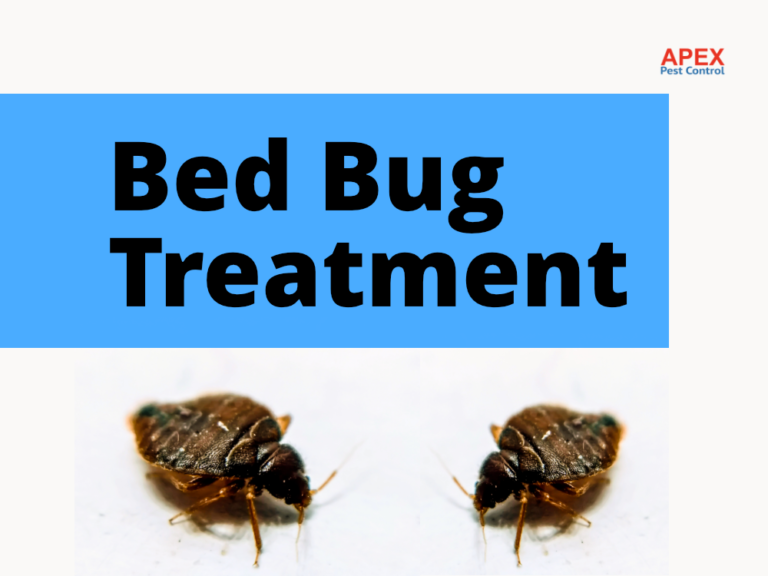Discover the most effective Bed Bug Therapy Techniques for Your Pest Control Strategy
When encountered with a bed pest problem, determining the most reliable therapy approaches comes to be critical for effective parasite control. Picking the ideal bed pest therapy technique customized to your details circumstance is important for accomplishing enduring results.
Identifying Bed Bug Problems
Recognizing signs of a bed pest problem can be critical in efficiently resolving the issue and preventing more spread in a timely fashion (Bed bug treatment). Bed insects are elusive insects that conceal throughout the day and appear at night to feed upon blood. Common indicators of a bed pest problem include reddish-brown stains on bed linens or furniture from crushed bugs, tiny dark spots that are bed pest waste matter, dropped skins in areas where bed pests hide, and a sweet, moldy smell in serious invasions
Trigger recognition of a bed bug invasion is crucial to stop the scenario from rising and requiring much more considerable treatment techniques. If you think a bed pest infestation, it is recommended to look for specialist pest control assistance to successfully get rid of the pests from your home.
Non-Chemical Treatment Methods
Non-chemical therapy methods supply efficient alternatives for dealing with bed pest infestations without counting on conventional chemicals. Warm treatment is one such technique that entails raising the temperature level in ravaged areas to levels that are dangerous to bed bugs. In addition, vapor therapy can be used to kill bed pests and their eggs by subjecting them to high temperatures, making it a beneficial non-chemical option for combating invasions.
Chemical Therapy Options
Having discovered effective non-chemical techniques for dealing with bed pest problems, it is important to take into consideration the efficacy of chemical therapy options in combating these resistant insects. Chemical therapies play an important role in bed insect control, specifically in extreme infestations where non-chemical techniques might not give enough relief. There are various sorts of chemical therapies readily available for handling bed insects, including pesticides, desiccants, and insect development regulatory authorities.
Insecticides are frequently used to kill bed insects on get in touch with and offer residual security against future invasions (Bed bug treatment). Desiccants work by damaging the outer waxy layer of bed bugs, leading to dehydration and fatality. Insect growth regulatory authorities disrupt the bed insect life process by inhibiting their advancement from fairies to grownups, ultimately lowering the population with time
When thinking about chemical therapy alternatives, it is critical to focus on safety and security by complying with tag guidelines, making use of proper protective gear, and thinking about the potential risks to pet dogs and people. Consulting with a specialist bug control service can help establish one of the most efficient and risk-free chemical therapy for your particular bed pest problem.
Integrated Parasite Administration Strategies

IPM methods for bed insect control may include comprehensive evaluation to identify the extent of infestation, recognition of vital harborage sites, and application of sanitation measures. In addition, minimizing clutter, securing gaps and cracks, and removing prospective hiding places can aid discourage bed bugs from developing themselves.
In addition, non-chemical control techniques such as warm treatment, vacuuming, vapor cleansing, and the use of bed insect catches can be effective parts of an IPM plan. These strategies target bed bugs at numerous life stages and interrupt their reproductive cycle, resulting in populace reduction.
Normal tracking and follow-up examinations are important in IPM to analyze the effectiveness of control steps and make essential adjustments. By integrating incorporated pest administration methods into your insect control plan, you can attain lasting success in managing bed bug problems.
Expert Elimination Providers
Professional elimination services supply customized know-how and sources for effectively eliminating bed insect problems. Bed pest problems can be specifically testing to tackle due to their resilience and ability to hide in different fractures and holes. Specialist pest control operators are educated to recognize the indicators of bed pests, situate their hiding places, and use targeted therapy approaches to eliminate them efficiently.
When selecting a specialist elimination solution for bed bug control, it is necessary to seek certified and licensed pest control companies with experience in dealing especially with bed insects. These experts have access to a variety of treatment alternatives, consisting of chemical and non-chemical approaches, to properly deal with bed bug infestations while guaranteeing the safety of family pets and residents.
Additionally, specialist pest control specialists can give follow-up assessments and treatments as required to make sure that the infestation is totally removed. Their know-how in bed bug actions and treatment protocols can aid stop future infestations, giving satisfaction for property owners and businesses alike. When encountered with a persistent bed insect problem, employing the services of professional pest control specialists is usually one of the most trustworthy solution to accomplish complete eradication.
Verdict

When encountered with a bed pest infestation, determining the most reliable treatment techniques ends up being crucial for successful bug control. Common indications of a bed insect problem include reddish-brown stains on bed linen or furnishings from smashed bugs, small dark areas that are bed pest excrement, shed skins in areas where bed bugs hide, and a pleasant, moldy odor try this out in extreme infestations.
Having checked out effective non-chemical approaches for addressing bed insect invasions, it read the full info here is essential to think about the effectiveness of chemical therapy options in combating these resilient insects. Chemical therapies play a crucial function in bed pest control, especially in serious problems where non-chemical methods may not provide enough alleviation. By incorporating these various treatment techniques right into an extensive bug control strategy, people can effectively eliminate and manage bed bug infestations in their organizations or homes.